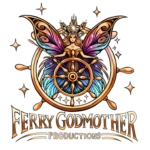Easter has been celebrated for centuries, but not with the famous Easter bunny or colored eggs. The holiday initially celebrated an important moment in the Christian religion, but eventually, it garnered a second life with modern Easter traditions.
What is Easter, and why is it celebrated? Continue reading to learn more.
History
The holiday stems from Christianity as it represents the resurrection of Jesus Christ and the many practices of the holiday. National Today, a website that records holidays, states, “Easter is a 2,000-year-old Christian holiday celebrating the resurrection of Jesus Christ.” It is a prominent holiday, so the traditions are equally important.
National Today mentions rituals like “the Great Lent as a time of repentance, fasting, and commemoration of the biblical events.” This is the practice of excluding certain foods, like meat or dairy, during the ritual, which begins 40 days before the holiday. This holiday and celebration date back centuries and continue to be celebrated by Christians and other groups of people.
Who Celebrates and Why
Christians and Catholics worldwide celebrate this holiday, but traditions and celebrations differ in many countries. The BBC, a British news organization, reports of an “Orthodox Easter” celebrated by “Orthodox Christians,” which is celebrated “later than most of the world.” This is because of the Julian calendar, which dates back to Julius Caesar in 45 BC. While the celebration date can be different between Christian groups, Catholics celebrate the holiday differently.
Catholics celebrate through differences in ceremonies and traditions. Britannica, the world’s oldest continuously published encyclopedia, states that the Roman Catholic tradition has “four parts of Easter.” It lists “the administration of the sacraments of baptism and confirmation to adult converts; and the Sunday mass.” The holiday typically marks the end of these practices for Catholics and acts as a spiritual goal and achievement. The holiday initially represents a remarkable day in Christianity, but it eventually took on a new life.
Present Easter
Currently, Easter is heavily associated with the Easter bunny and finding colorful eggs, but it also represents the return of spring. Time magazine, an American news magazine, notes that the Easter bunny was likely established in the United States by “German Immigrants in the 1700s.” The mammal and its eggs also “represented new life and spring,” which correlates with the holiday’s original meaning. This is where decorating eggs and eating candy originates as it leans towards this newer holiday version. Nonetheless, the holiday continues to represent new life and a new season.
To Conclude
Easter has been celebrated for centuries, but its meaning of new life remains constant. The holiday celebrates the resurrection of Jesus Christ in Christianity and Catholicism, yet it is celebrated differently worldwide. Different times, calendars, beliefs, and celebrations make Easter and its devotion to a new start.
For more about holidays, community, art, and gaming, visit the rest of FerryGodmother.com.

